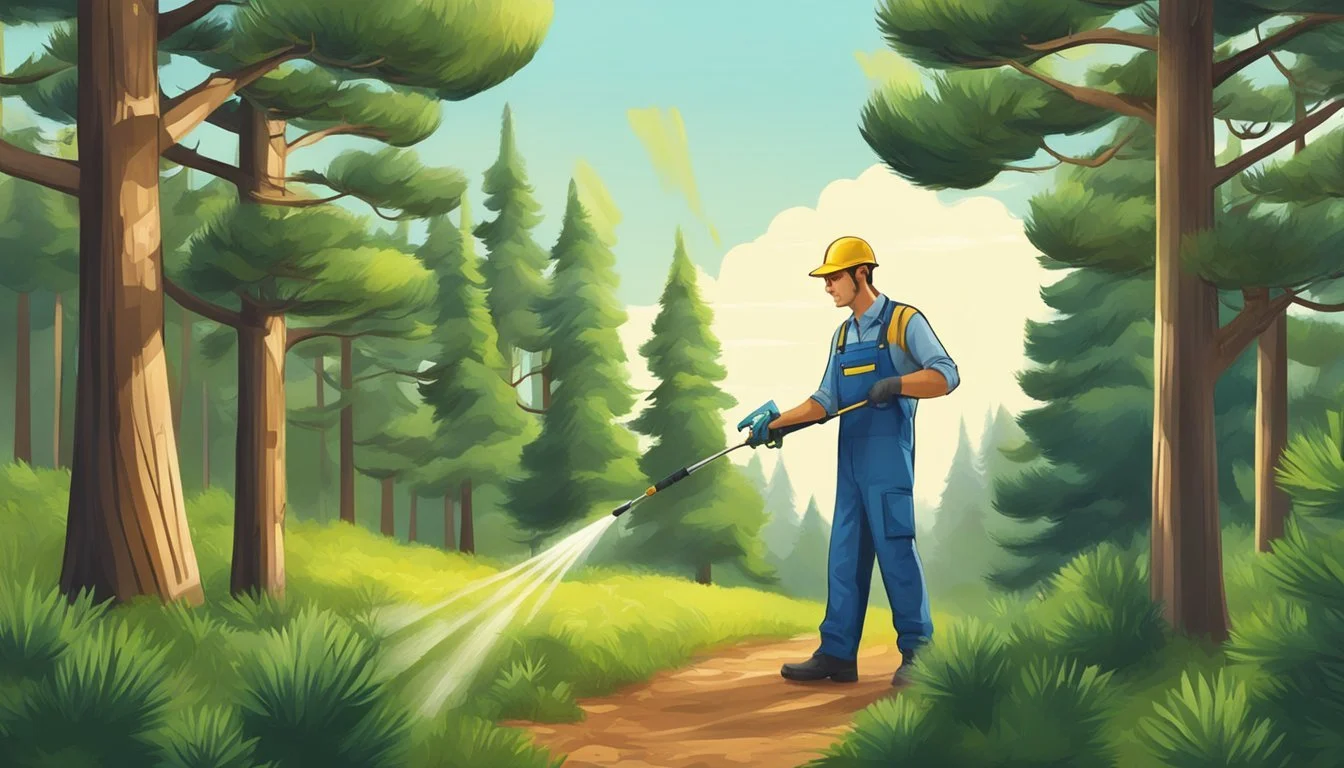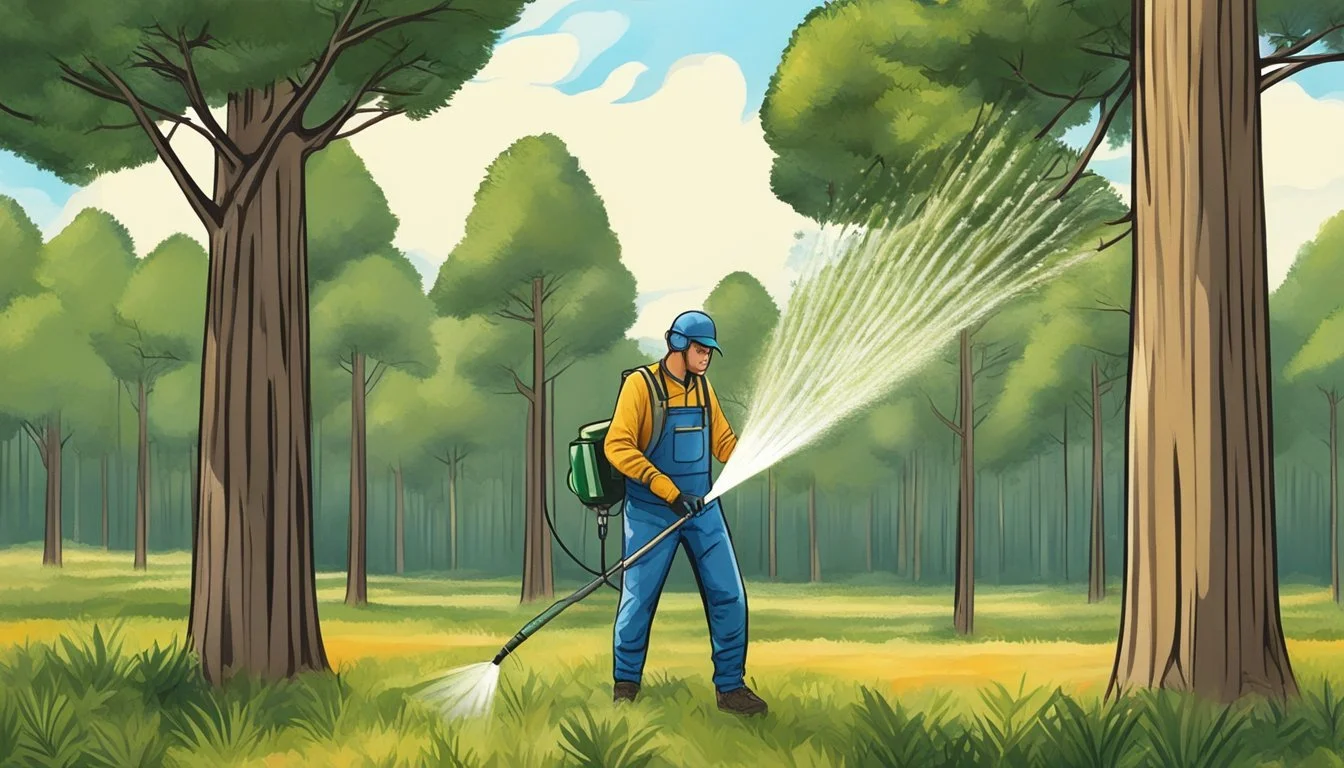Pest Control for Pine Nut Trees
Effective Strategies and Solutions
Pine nut trees, revered for their edible seeds, are a valuable horticultural asset. However, just like any agricultural endeavor, they are vulnerable to a variety of pests that can diminish their health and productivity. Effective pest control is essential to ensure these trees can flourish and produce the much-sought-after pine nuts. Understanding the life cycle of key pests and their impact on pine nut trees is the first step in developing a successful pest management strategy.
Managing pests in pine nut trees involves a combination of monitoring, preventive measures, and, when necessary, the use of treatments. Biological control agents, cultural practices, and chemical controls each play a role in the holistic management of these pests. Proactive measures, such as maintaining tree health and applying targeted solutions, can help protect pine nut trees from common threats.
Pest management strategies must be carried out with precision. This requires knowledge of the correct timing for interventions to be most effective and the careful selection of control methods to minimize harm to the trees, beneficial organisms, and the environment. By staying vigilant and implementing a tailored pest control approach, growers can help ensure the vitality and productivity of their pine nut trees.
Understanding Pine Nut Tree Pests
Effective pest control for pine nut trees begins with a clear understanding of the types of insects that may pose threats and the behaviors that drive them. Recognizing specific pests and their life cycles is crucial to maintaining the health of these trees.
Identifying Common Pests
Pine nut trees can be affected by a variety of insects that harm their growth and productivity. Common pests include:
Bark Beetles: Typically attack weakened or stressed trees, boring into the bark.
Scale Insects: Attach themselves to the branches and leaves to feed on sap.
Aphids: Small insects that cluster on the undersides of leaves, excreting a sticky substance known as honeydew.
Mites: Microscopic pests that cause yellowing or bronzing of needles.
Weevils: Adults and larvae feed on tree buds and young shoots.
Biology and Behavior of Pests
Bark Beetles: They undergo a complete life cycle from egg, larval, pupal, to adult stages within the bark. Infestations are often exacerbated by drought or other stress factors.
Scale Insects: These pests have a protective coating that makes them resilient against some control methods. They reproduce rapidly, making early detection vital.
Aphids: They thrive in colonies and can rapidly increase in number, especially in the presence of ants that farm them for honeydew.
Mites: Often proliferate in hot, dry conditions and can cause significant damage before being detected due to their size.
Weevils: Some species lay eggs inside pine cones, impacting seed development, while others affect the tree's shoots.
Understanding the specific habitats and life cycles of these pests allows for targeted interventions to protect pine and fir trees from potential damage.
Preventative Measures for Pine Nut Trees
Effective prevention and management strategies are crucial for maintaining healthy pine nut trees in a garden or landscape. Key practices include optimizing cultural methods and establishing a routine for monitoring and maintenance.
Cultural Practices
Creating a conducive environment for pine nut trees starts with cultural practices that promote healthy growth. Soil quality is paramount; it should be well-drained and replenished with nutrients using organic mulch, which improves soil structure and fertility. Irrigation must be managed carefully to avoid water stress, ensuring that trees get enough moisture without becoming waterlogged. Appropriate thinning and pruning allow for sufficient sunlight and air penetration, reducing the risk of fungal diseases. Furthermore, proper shade management can prevent excessive sun exposure that might stress the trees and attract pests.
Regular Monitoring and Maintenance
Regular monitoring is a vital aspect of pine nut tree management. Inspecting trees at least twice a month for pest presence can catch infestations early. The focus should be on the health of the needles, looking for irregularities such as discoloration or damage. Maintenance involves proactive measures like timely removal of infected or dead branches to prevent the spread of disease. Additionally, this includes the careful timing of actions, such as harvesting at the correct stage to minimize damage and stress to the trees, consequently reducing vulnerability to pests.
Pest Control Strategies
Effective pest control is essential for maintaining the health and productivity of pine nut trees. Appropriate pest management not only prevents damage to trees but also preserves the quality of the nuts produced. The following subsections discuss both organic and chemical approaches to controlling pests in pine nut trees.
Organic Control Methods
Organic pest control emphasizes the use of natural substances and methods to deter or eliminate pests. One of the key organic solutions is the application of neem oil, a natural pesticide that disrupts the life cycle of pests without harming beneficial insects. Moreover, horticultural oil can be applied to smother and kill pests in their juvenile stages. These oils should be used judiciously, particularly during cooler parts of the day to minimize any potential harm to the plants themselves.
Implementing natural predators into the ecosystem is another organic method to manage pest populations. For example, attracting birds or insects that feed on common pests can help reduce their numbers effectively. A table highlighting organic control methods and their targets:
Organic Method
Neem Oil
Horticultural Oil
Natural Predators
Target Pest
Aphids, mites, caterpillars
Scale insects, mite eggs
Beetles, moth larvae
Chemical Control Approaches
When organic methods are insufficient, chemical control involves the use of insecticides to curb pest populations. It's crucial to select the appropriate pesticide based on the specific pest and to adhere to the recommended application rates and times. Proper pesticide use ensures maximum effectiveness while minimizing potential adverse effects on the environment.
Control measures with insecticides should be a part of an Integrated Pest Management (IPM) strategy, ensuring that chemicals are only used when necessary and in combination with other control methods for a comprehensive approach. Timing of pesticide application is critical to avoid the flowering period and to target the most vulnerable stage of the pest.
List of targeted chemical approaches:
Selective insecticides: Used to target specific pests without affecting non-target species.
Broad-spectrum insecticides: Applied for severe infestations, affecting a wide range of insects.
Pine Nut Tree Treatment and Recovery
Successful treatment and recovery of pine nut trees from pest infestations require a focused approach. Immediate action can prevent harm to the bark, reduce stress on the trees, and ultimately save them from potential death.
Dealing with Infestations
Southern pine beetles and bark beetles are notorious for damaging pine nut trees. Once infested, trees may display frass (sawdust-like material), pitch tubes (small, popcorn-shaped masses of resin), and discolored bark. Quick identification is crucial. One can control common nut tree pests by removing infested trees to prevent the spread of the beetles. Pine needle scale, another significant pest, can be treated with horticultural oil or insecticides if needed.
Early intervention with insecticides is most effective before signs of blue-stain fungus—a secondary infection carried by beetles—appear. Careful timing and application are essential to avoid negatively impacting non-target insects and the surrounding environment.
Healing and Reviving Stressed Trees
Stressed pine nut trees require attention to their surrounding soil and essential nutrients. Improving tree vigor is key to recovery and includes:
Mulch: Providing a layer of organic mulch can help maintain soil moisture and temperature, promoting healthier root development.
Irrigation: Adequate watering, especially during dry spells, supports the overall health of the trees.
Shade and Sunlight: Ensuring the trees have the appropriate balance of shade and sunlight can reduce stress and improve nutrient intake.
It is also imperative to stop pine beetle infestations by applying preventive treatments when the tree shows no infestation signs. Healthy trees are naturally more resilient to pests and diseases. Recovery strategies must include maintaining tree health with proper fertilization and care tailored to the pine nut tree's specific needs.
Long-Term Management and Conservation
Ensuring the health and productivity of pine nut trees hinges on a dedicated approach to long-term management and conservation. This focus protects not only the current health of the trees but also secures their sustainability for future generations.
Sustainable Harvesting Practices
Sustainable harvesting is a cornerstone of long-term management. It necessitates a calculated approach to the removal of pine nuts, allowing the trees to continue their growth cycle undisturbed. For example, nut trees should be harvested with precision, ensuring that only ripe seeds are collected and the tree's health is not compromised. A method such as selectively picking nuts, as opposed to wholesale clearance, minimizes stress on individual trees.
Importantly, monitoring is a key component of sustainable management. Inspecting pine trees for health indicators such as needle vitality and proper growth forms a part of a comprehensive pest management strategy. Timely interventions, like the removal of infested branches, help to control pest populations and maintain tree vigor.
Promoting Biodiversity in the Garden
A garden rich in biodiversity supports the control of pests and diseases naturally, fostering a healthier growing environment for pine nut trees. Intentionally cultivating a diverse array of plants can attract beneficial insects and birds that prey on common pests. For instance, planting flowering herbs may draw predatory insects that feed on tree-damaging larvae.
Furthermore, integrating different species into the landscape creates a robust ecosystem that can resist invasions of pests more effectively. This diversity also promotes genetic variation among pine trees, which can confer resilience to various environmental stressors. Maintaining a mixed-age stand of nut trees can lead to improved long-term health and productivity by ensuring not all trees are susceptible to pests and diseases at the same time.
Frequently Asked Questions
Effective pest control is crucial for maintaining the health and productivity of pine nut trees. This section will address common questions and provide practical advice for managing pest issues.
What are the most effective methods for controlling pests in pine nut trees?
Regular monitoring and timely intervention are key strategies in managing insect pests of pine nut trees. Integrated Pest Management (IPM) tactics, which include a combination of biological control, cultural practices, and chemical treatments, are often recommended to keep pest populations in check.
Which insecticides are recommended for dealing with pine beetles?
To combat pine beetles, one can use specific insecticides that target these pests. It is important to consult a local extension service or professional arborist, as they can recommend the best insecticides for your particular situation and ensure that the application is timed appropriately to minimize impact on non-target species.
How can I prevent insects from damaging my pine nut trees?
Prevention of insect damage to pine nut trees involves maintaining tree health through proper watering, fertilizing, and pruning practices. Employing natural pest control methods and keeping the area around the trees clean can also protect your pine trees from pest infestations.
What signs indicate a pest infestation in pine nut trees?
Visible signs of a pest infestation in pine nut trees include the presence of insect larvae, holes or excessive sap on the bark, discolored needles, and dieback of branches. Early detection is critical for managing infestations effectively.
How often should pine trees be treated for bug prevention?
The frequency of treatments for bug prevention in pine trees varies depending on the specific pest and regional conditions. Regular inspections at least once every two weeks during the growing season are recommended to identify potential issues early and determine the need for preventative measures.
What treatments are available for pest-related pine nut shortages?
Treatments for pest-related pine nut shortages focus on restoring tree health and increasing resilience. Options may include nutritional supplements to support tree vitality and targeted chemical or biological controls to manage pest population. It is essential to address the underlying causes of the shortages to prevent future nut crop losses.






